
So this is it, the greatest car show on the planet; no holds barred, no compromises, only the crème de la crème. Yes, there are awards at the Pebble Beach Concours but don't be fooled, every car here is a world class winner. One does not enter a car into the concours, one is invited. Organizers strive for the ultimate in whatever categories are to be highlighted in a given year. And this was the year of Maserati!
After winding my way through a byzantine course in the Monterey peninsula (the "most circuitous path possible," grumbled one fellow in the parking lot), I started my hike to the fabled golf course with heavy anticipation. Word was to get there as early as possible. I heeded that word not only due to the crowd but because I knew my time was limited before the morning clouds burned off and my sunburn would be scorched by the sun. As the course unfolded before me, I began to understand what a dazzling backdrop this would be to display fine artwork in automobile form.
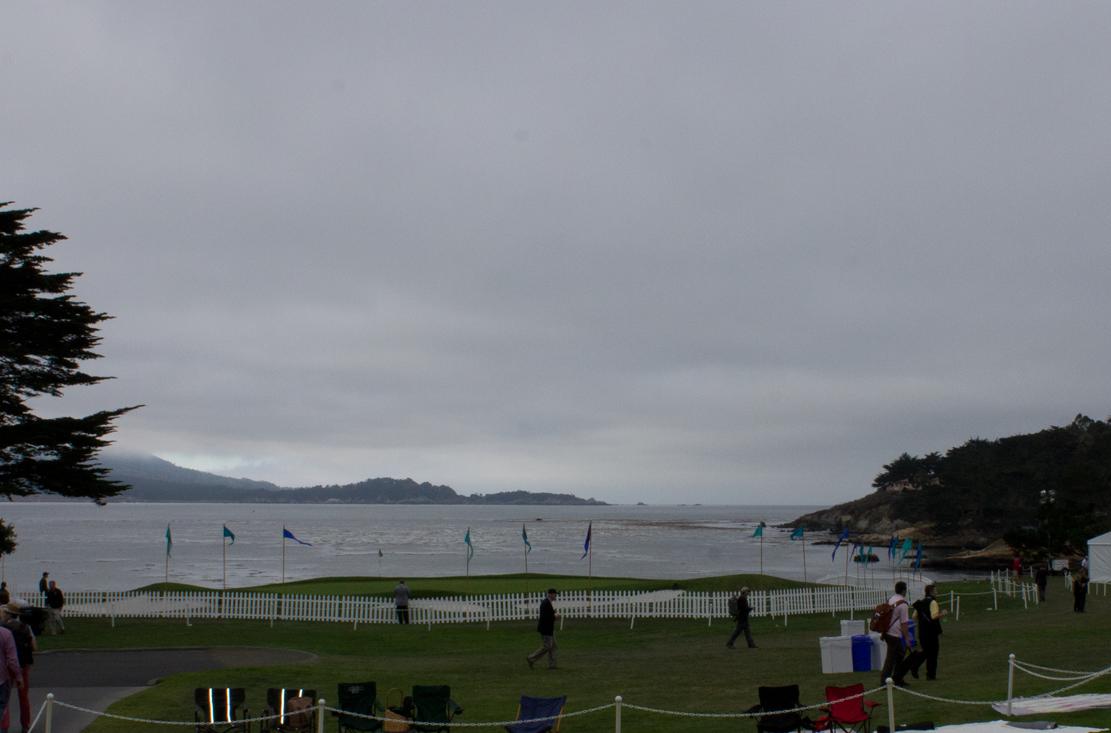

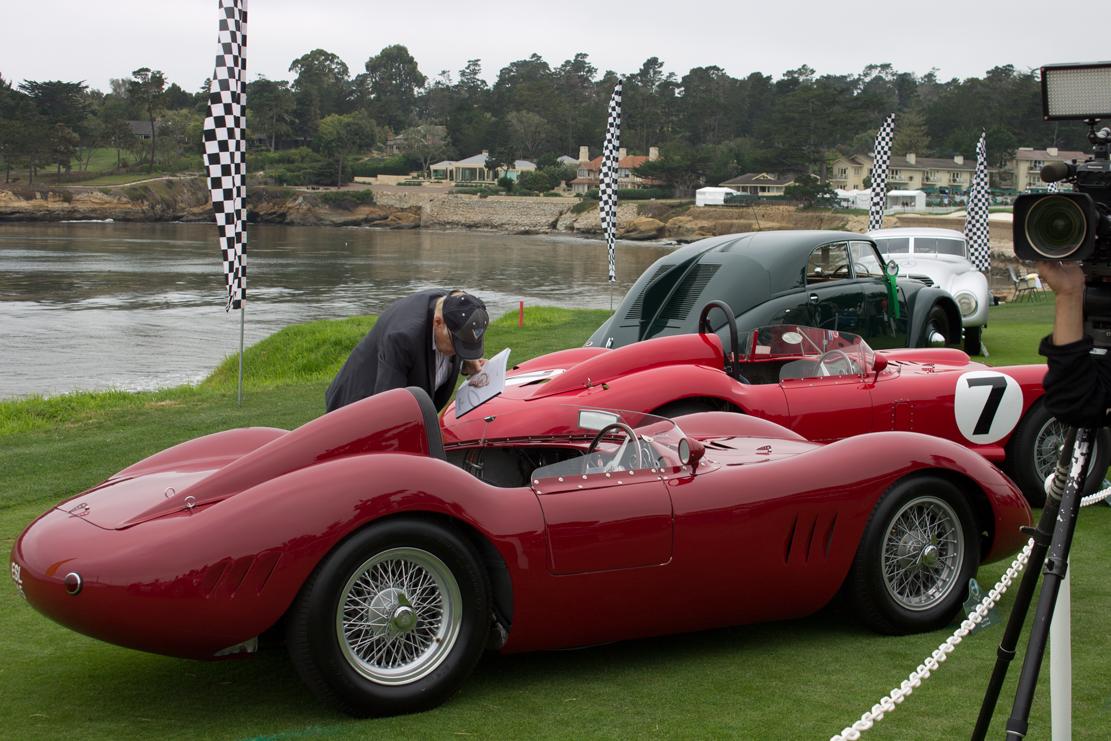
A short video of some of the sights and sounds:
The Ferrari 250 Testa Rossa race cars which dominated racing from 1957-60 were a featured class. As with anything involving the prancing horse, interest was high even early in the morn. Pebble was able to assemble an amazing number of these cars, of this too I was able to make a short video.
As always, unique specialty cars were in abundance. (Click on any photo for a complete description from the Pebble car guide)
In 1949, a Jaguar XK120 achieved the title of the "World's Fastest Production Car" at 132.596 mph on a closed autoroute in Jabbeke, Belgium. When this record was broken by a Pegaso Z-102 in 1953, jaguar chairman William Lyons called Norman Dewis, Jaguar's chief test engineer, and asked what he was going to do about it [funny!]. Dewis and the Jaguar team headed back to Jabbeke in October with a car that had undergone a number of subtle modifications to its powertrain and aerodynamics, including a full under shield, a metal tonneau cover and streamlined headlamps. The most noticeable feature was a Perspex "bubble" canopy that was bolted down once Dewis was in the car. After inflating the nearly slick tires to 50 psi to reduce drag, Dewis smashed the Pegaso record with a top speed of 172.412 mph, verified by the Royal Automobile Club of Belgium, which brought the laurels back to Jaguar. The XK120 was once again the fastest car in the world.
A total of 84 production versions of the racing GT40 were completed at Ford's Advanced Vehicle facility in Slough, England. J.W. Automotive Engineering took over the Slough facility and started manufacturing strictly road-going versions of the GT40 in 1966. The company was headed by John Weyer, the ex-GT40 team manager and Ford's GT40 distributor in England. His goal was to create a more roadworthy GT40 that Ford's racing versions. The GT40 Mark III was a GT40 for the street, just as the jaguar XKSS was a D-Type for the street. it has a detuned Cobra 289 V8 engine and a more civilized interior with slightly better ground clearance. Only seven were built, perhaps due to the price of $18,500 - more than a Ferrari or Maserati. This GT40 (chassis 1103) was first sold to Sir Max Aitken of London, then lent to the National Motor Museum at Beaulieu in England. Its current owner bought the car in 2011.
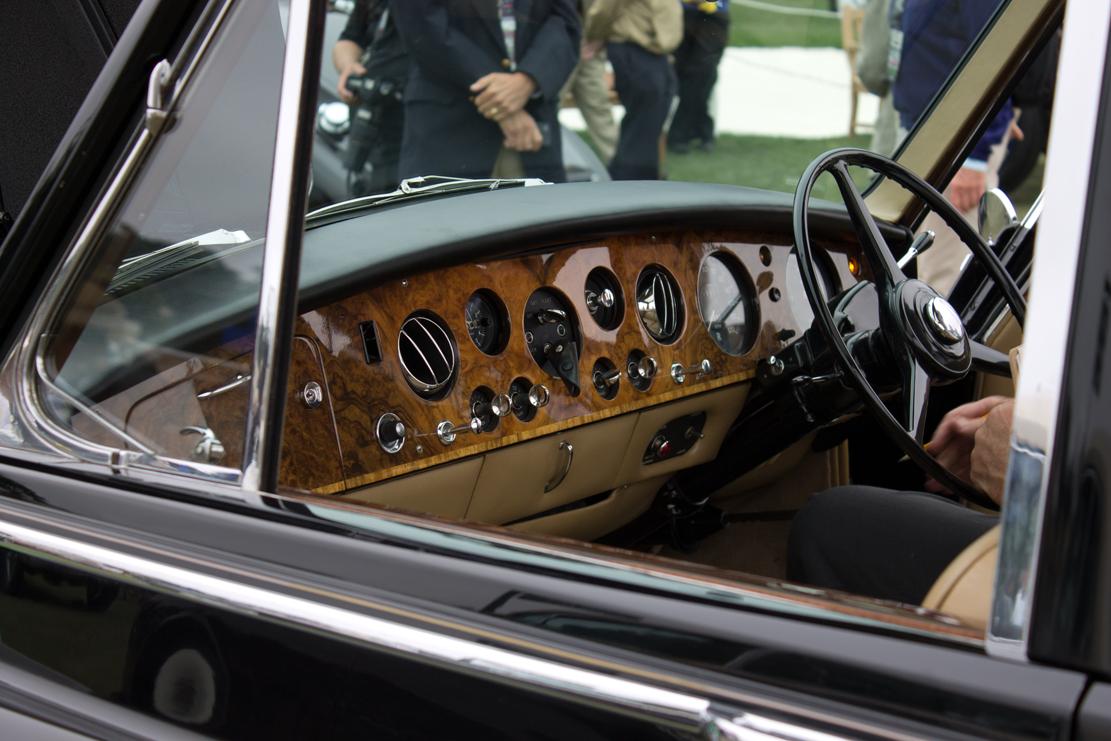
It could easily take a full day to absorb the craftsmanship and fine details of each and every car. Mass manufacturing has replaced custom coachbuilding leaving us with cars without the personality of days gone by. That makes their preservation all the more important. Even in its earliest days Rolls-Royce stood out among the rest in ways that can still be appreciated even today. The quality of work jumps out at you and "primitive" is a word that never crosses your mind. Here are some examples of this cross between fine engineering and fine art.
This Rolls-Royce Silver Ghost (60922), one of the oldest in the world, is known as the "Silver Dawn". The car was first owned by Charles Angas of South Australia, and he and his family traveled extensively around Great Britain in the car between 1910 and 1912 before taking it to Australia. It wears a polished Roi des belges tourer body built by Barker, similar to the famous Rolls-Royce 40/50 that became known as the Silver Ghost (AX201). The Silver Dawn has just completed the 1,800 mile 2013 Centenary Alpine Trial in commemoration of the first Alpine Trial that proved the Silver Ghost's reliability. The Silver Dawn was built in 1908 and still features many original parts, including its chassis, engine, gearbox and front and rear axles. The engine even retains its original cast-iron pistons. The car was restored by Rolls-Royce Motor car's authorized dealer P&A Wood.
In 1906, Rolls-Royce built four chassis to be shown at the Olympia Motor Show in London, including two examples of a new car initially designated the 40/50 HP. The model that gave the model its now much more well-known name was AX201 (with chassis 6BD), which was the twelfth 40/50 HP built. It was painted in aluminum paint with silver-plated fittings and was nicknamed the "Silver Ghost" to emphasize its ghost-like quietness. This Silver Ghost was privately entered in the prestigious 1912 Austrian Alpine Trial by its first owner, James Radley. Rolls-Royce prepared a factory team of four cars for the 1913 event, and the team gained six awards, including the Archduke Leopold Cup. Replicas of the victorious cars were put into production and sold officially as Continental models, but they were called Alpine Eagles by chief test driver Ernest Hives, and this is the name that they have kept ever since.
Here's a quick video trip down the regal row of Rolls-Royce.
These cars alone are reason enough to come. But Maserati was the featured marque and for them I did come. Some truly superb models were on hand, plucked right out of books and deposited onto the lush lawns of Pebble Beach. Here I found both rare racing cars and rare GT street models. Let us sample a few below:
The Maserati Tipo 26B (chassis 33/2515) is considered to be one of the, and possibly the, oldest running Maseratis in the world. It first appeared as a works factory car in 1928 at the Targa Florio, driven by the Marquis Diego de Sterlich. For 1930 it returned as a factory team car fitted with a 2.5 liter engine. At the Grand prix of Rome, Luigi Archangeli scored his first major victory and at Monza finished second. in 1931 Rene Dreyfus drove the car although struggled with reliability in the first two races in Tunis and Tripoli.
Dreyfus claimed pole position for the Monaco grand Prix, setting fastest lap in qualifying. For the 1932 season Dreyfus was again at the wheel, coming in first in the Reale Premio di Roma and second at the Grand Prix de Marseille and Nimes. The car was used sparingly for the 1933 season and its final races were at Monaco and Montlhery. When war broke out in Europe, 2515 was hidden in an Algerian cave before reappearing in 1954 in Morocco. It was eventually stored in an aircraft hanger in France until discovered by an American collector. Television personality Alain de Cadanet owned it in the 1980s before its current owner acquired it in 2000.
The first Maserati 5000 GT, Tipo 103, was commissioned by the Shah of Iran in 1959. Maserati's chief engineer Giulio Alfieri designed it around the 3500 GT, with a strengthened chassis and suspension to cope with the massive power of the larger 5-liter engine developed from the 450S racing cars. It had a stylish Superleggera body by Touring and when completed, the Maserati 5000 GT was something very special indeed. With a top speed of over 175 mph and classic Italian styling, it quickly became the supercar of the day. Touring built this identical car on chassis 103.004 for South African businessman and owner of the Kyalami Circuit, Basil Read. There were 5000 GTs built for men such as Giovanni Agnelli, Briggs Cunningham, Stewart Granger, and Ferdinando Innocenti. After the first two were built by Touring, the following 32 were custom built by seven different Italian carrozzeria: Allemano, Frua, Monterosa, Pininfarina, Ghia, Michelotti and Bertone.
Maserati wanted a car that could match that of their nearby neighbors, Ferrari. Maserati's Tipo 54 450S was conceived in 1954 by the company's chief engineer, Alberto Bellentani. The tubular chassis was the work of Valerio Colotti. Chassis 4503 was completed in December 1956 and became one of the factory team cars for Maserati in 1957. At its first race at Sebring on March 23, 1957, it breezed to victory with Juan Manuel Fangio and jean Behra driving over the 12 hours. Behra then crashed this car in practice; the next appearance for the rebuilt car was at the Swedish grand prix 1000 km in August, 1957, driven by Stirling Moss and Harry Schell. In the last event of the season, the Caracas race in November 1957, this car was again driven by Moss. While in the lead, he collided with an AC Bristol, demolishing both cars. The car was brought back to Modena, rebuilt, and sold to a South American in 1958.
Between 1954 and 1956 Maserati built 60 A6G/54 bare chassis. The 2-liter engine was a Colombo-designed twin-overhead-cam unit with a lightweight alloy block, using dual ignition and triple Weber carburetors. It had a wet sump lubrication system and depending on the equipment used, the motor developed between 120 and 150 bhp. Of this total 19 cars were bodied by Zagato, several by Allemano, and ten convertibles and seven coupes were bodied by Frua. This car is the only surviving A6G/54 Series II Frua coupe. Most Frua convertibles were Series III cars and this car looks similar to the convertible but with a hardtop.
This 8TCF (chassis 3032), also known as the Boyle Special, is famous for its many visits to the Indianapolis 500 but was originally a Maserati team car. In 1939 and 1940 it raced at Indianapolis, where it won both times driven by Wilber Shaw; the following years it was forced to retire. The car visited Indianapolis again in 1946 and 1947, finishing third and fourth. It raced again in 1949 but failed to finish. The 8-cylinder Testa Fissa or fixed-head engine was designed by Ernesto Maserati. Built for the new Grand Prix 3-liter supercharged Formula, it had the speed to take on the mighty Mercedes, Auto Unions and Alfa Romeos but sadly not the reliability. The 3-liter supercharged engine featured independent fuel feed to the two groups of four cylinders and twin Roots superchargers. The 8TCF debuted at the 1938 Tripoli Grand Prix and performed well. Three cars were completed for the 1938 racing season.
I imagined that Frua A6G coupe parked in front of a Mediterranean mansion in the evening, car and house complementing one another in exquisite harmony. And the dreamlike 5000 GT posing as the ultimate exotic of its time, branding the memories of anyone lucky enough to catch a glimpse. These ethereal beings are time machines to before the supercars of the seventies launched a new genre that has become mainstreamed. Like 1960's Bond, they lived in a world apart, trekking through this world on another plane.
Below is a video of a few of the Maseratis on display.
Famished at this point, I headed for the VIP tent where breakfast awaited. Afterwards I hiked back to my car to deposit my jacket and goodies I'd received. The sky was clearing at this point but I decided to give it a shot so I started back. My legs were really aching at this point. Along the way this woman adopted me, telling me about her connections to the event. She was smart, stylish and independent, the kind with whom I am sympatico. But being damaged (in more ways than one) I did not open up to her as I should have. By the time I got back the sun was out in full glory.
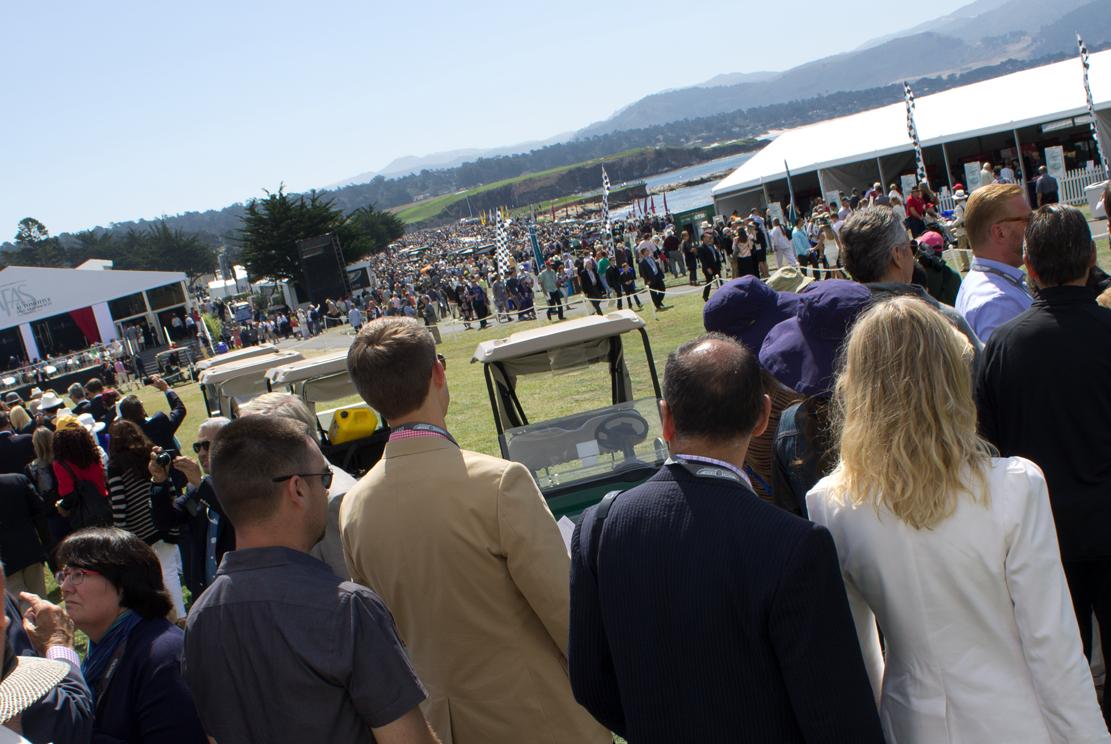
By this time the crowd was really starting to fill in. I vied with the sun for a bit but lost miserably. Time for me to flee way too early. Picture taking time had certainly passed with the increased density but I would have enjoyed just mingling for a change and appreciating the cars. So except for one last coda, I bid adieu.
Click here to see the entire set of pictures along with associated car background.
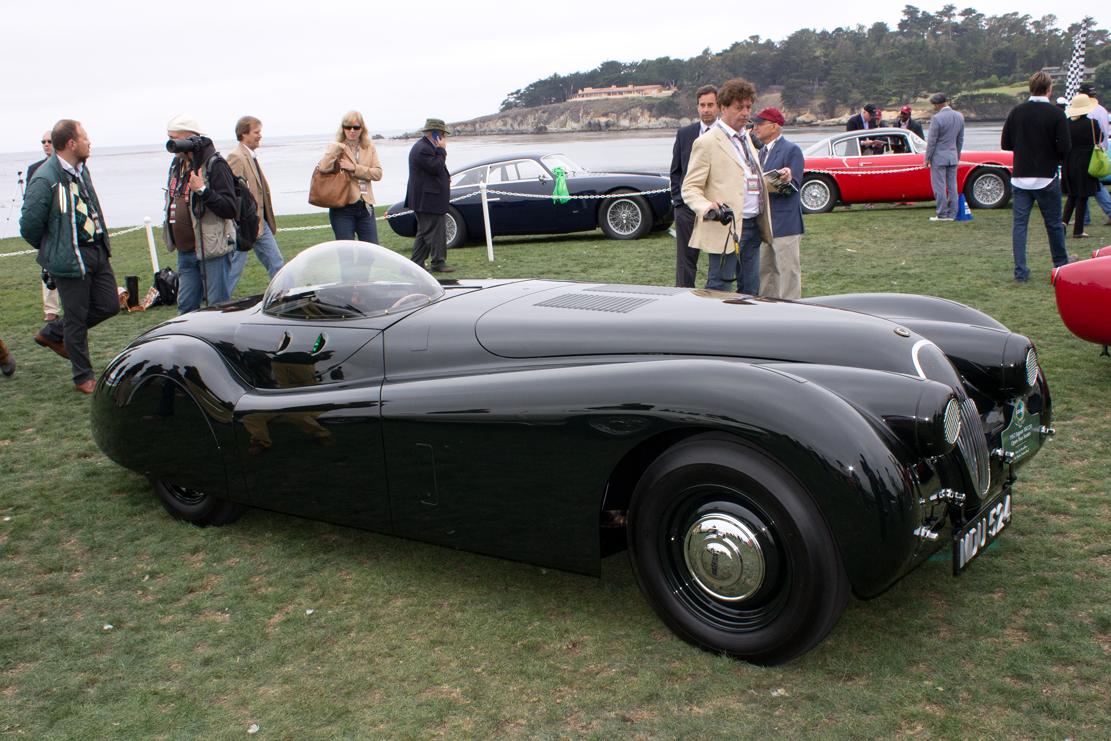
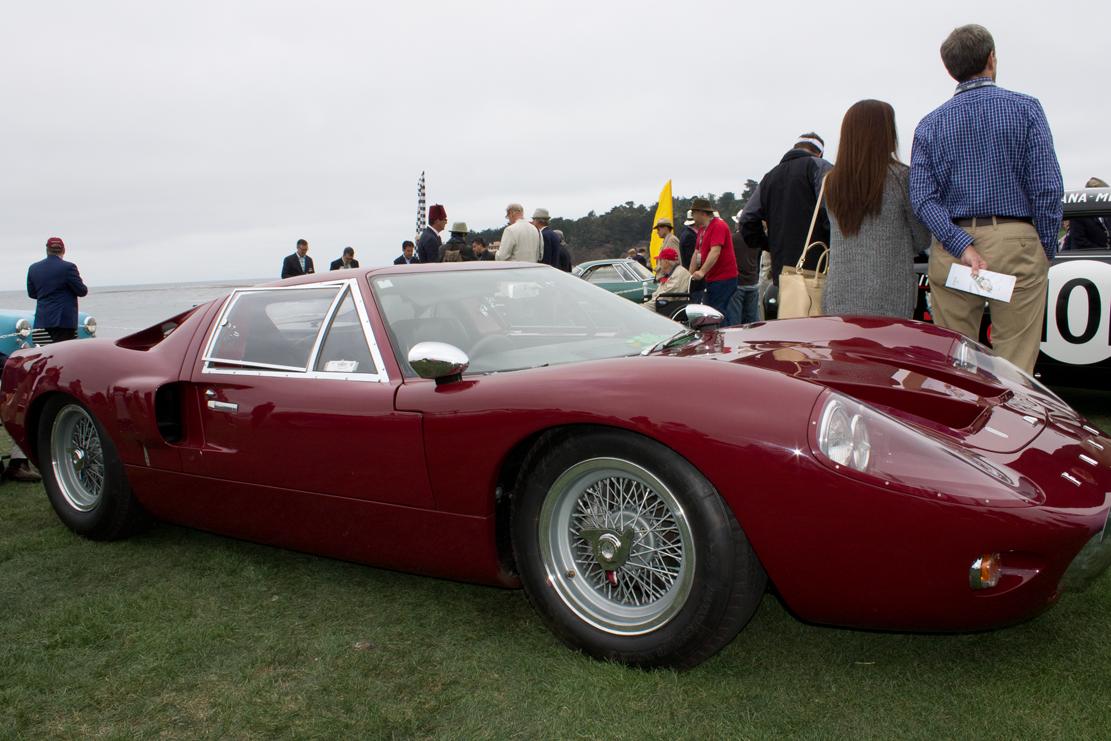
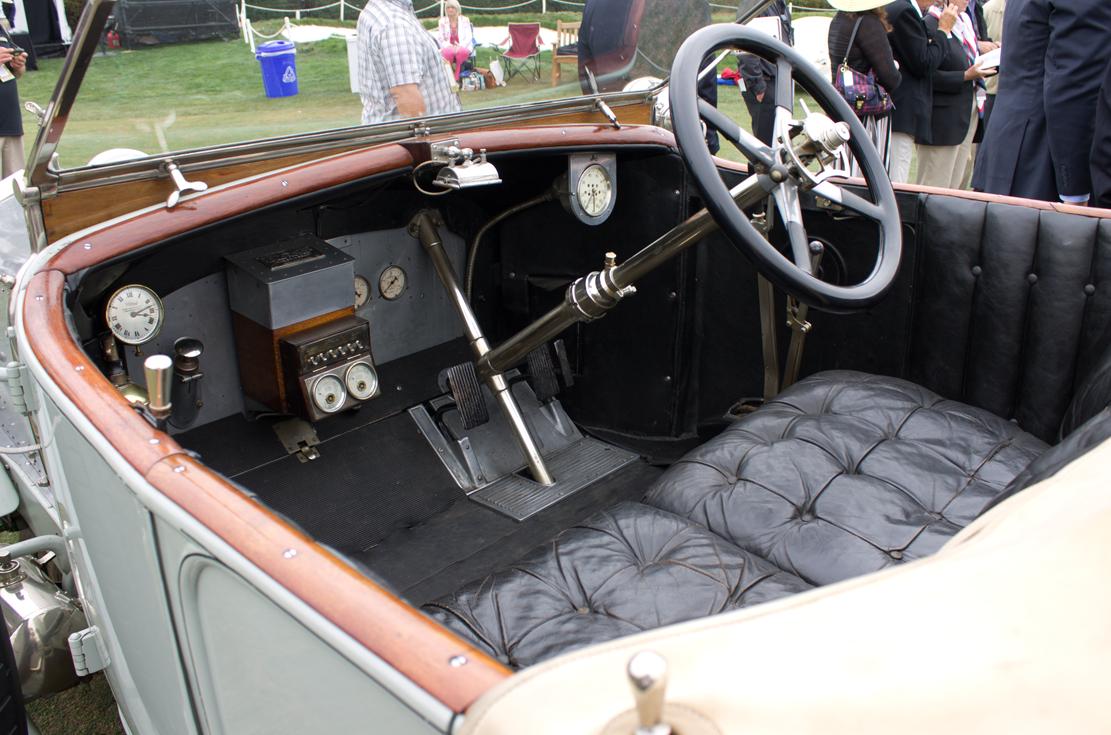
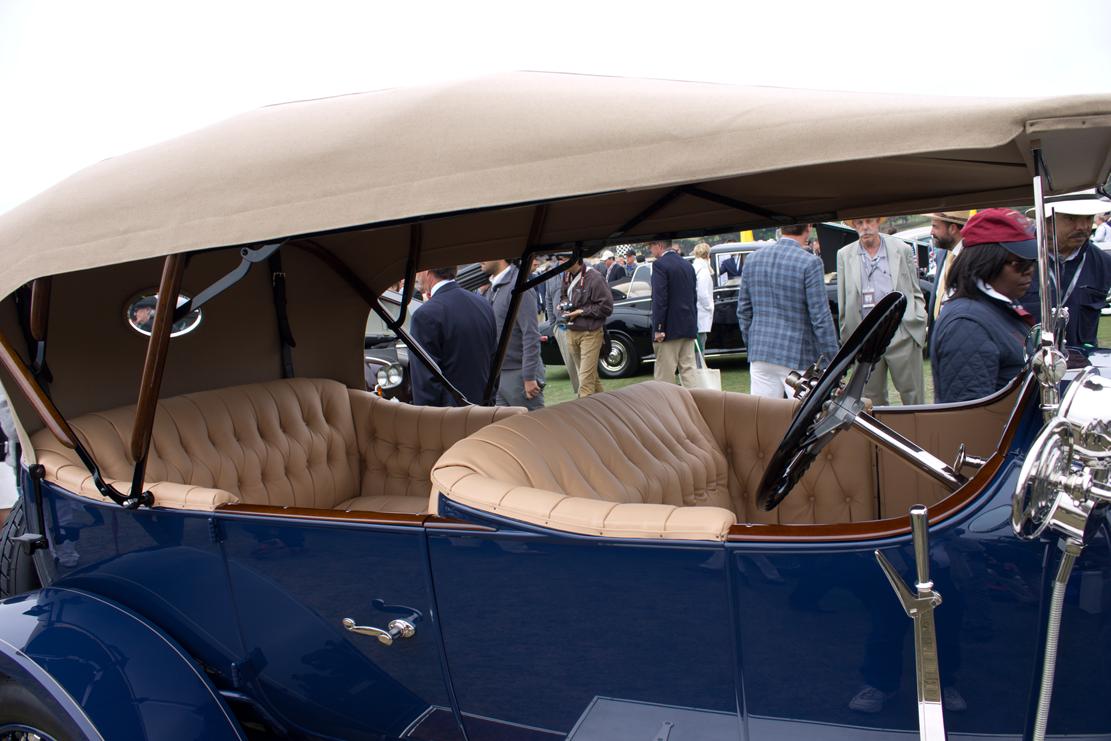


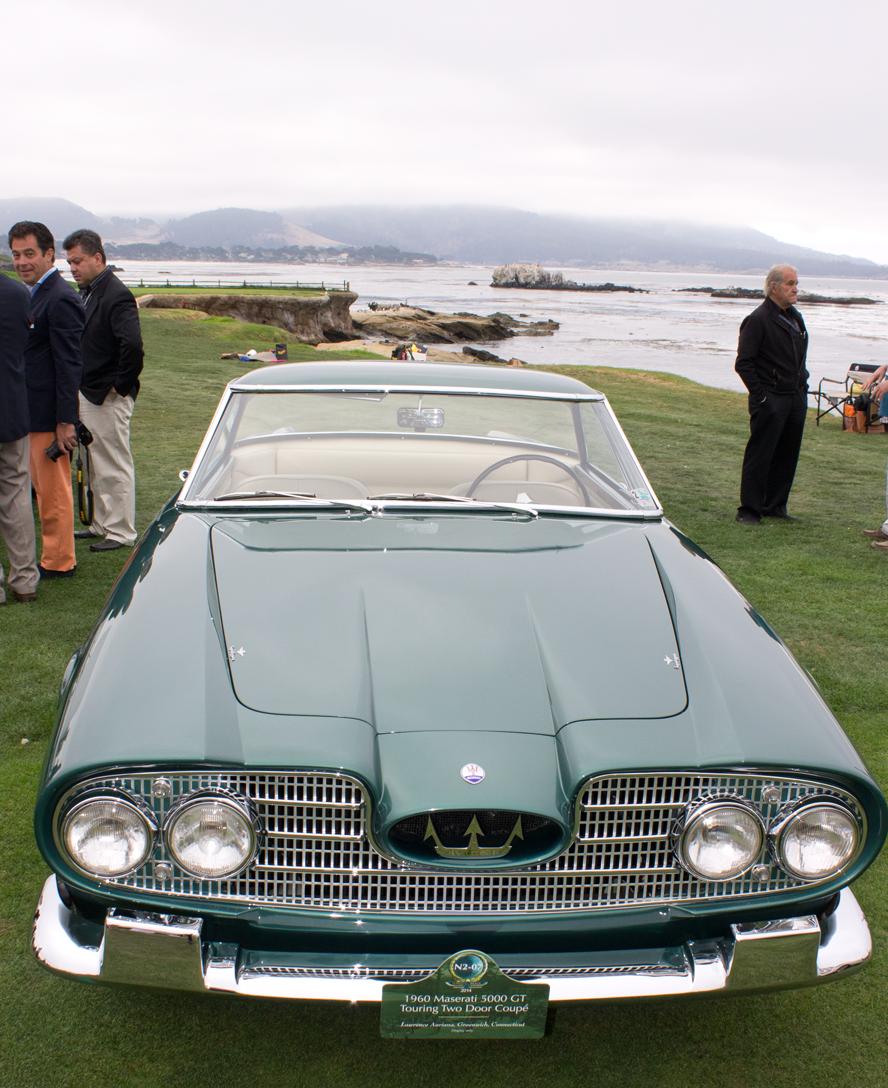
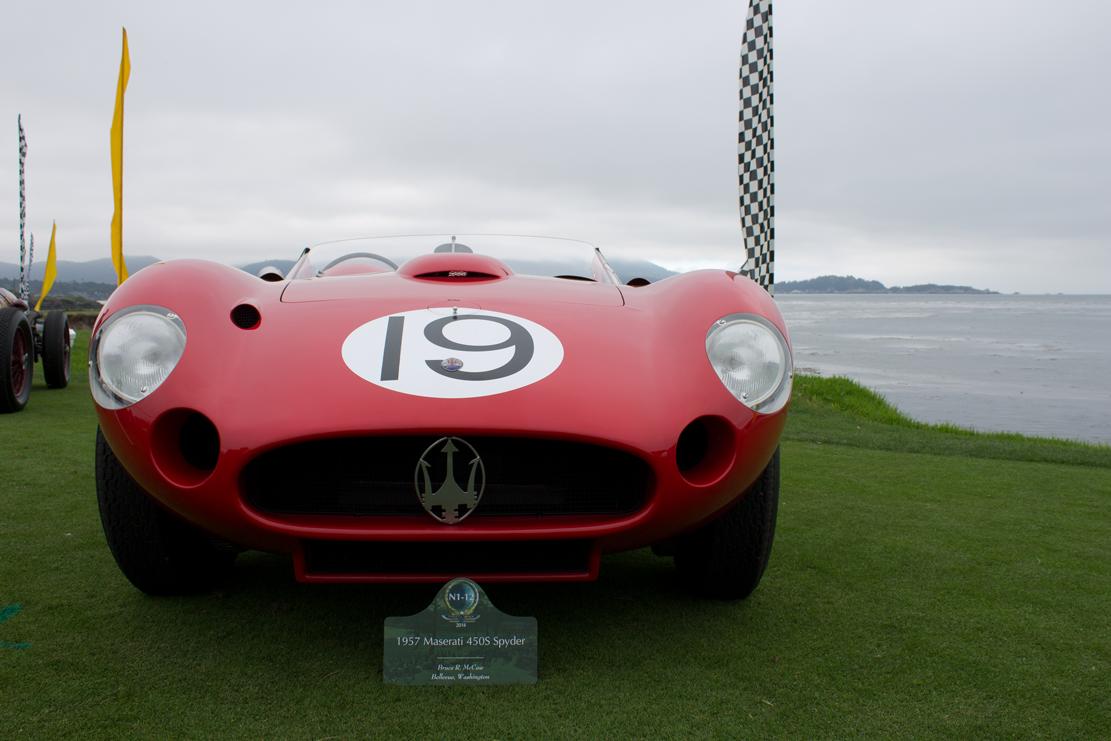
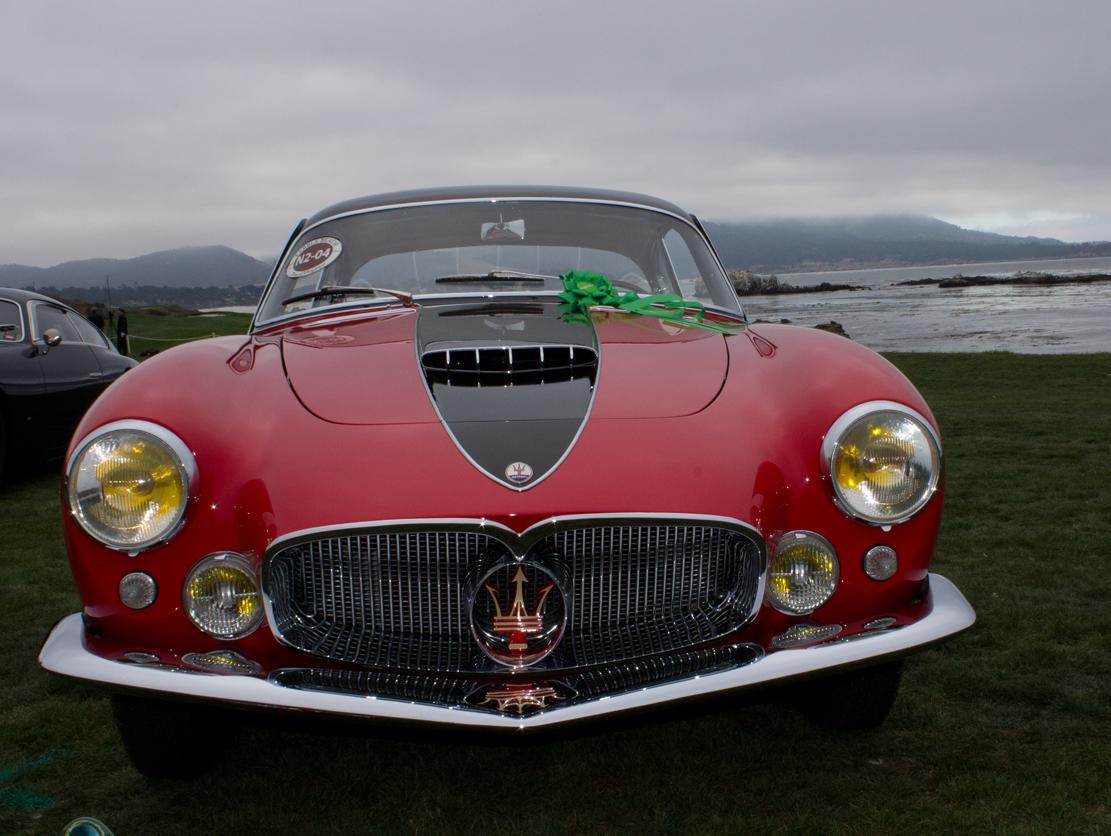

No comments:
Post a Comment